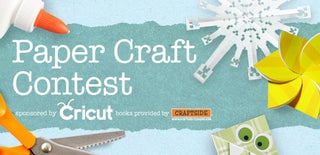Introduction: Paper Joint/Suture (A0)
Paper, as a recyclable/green resource, has many applications. Previously, we have demonstrated that papers can be reused as brush pots. Due to the increasing need of recyclable/green technologies, we would like to further explore the opportunity of paper engineering. In this instructy, we would like to present our design of a joint/suture for polymeric linkage of papers (via Yin and Yang complementations). The method provided in this tutorial is easy, quick and economical.
- The original procedure usually takes < 1 minute.
- As a demonstration of polymeric linkage, a paper mat is designed for teaching purposes.
- The whole procedure usually takes < 5 minutes.
Step 1: Materials Required
- Adequate amount of A4 sized papers.
- Inking tool (e.g. pen).
- Measurement tool (e.g. ruler).
- Shearing/slicing tool (e.g. scissors and/or cutter blade).
Step 2: Construction of the Template
Draw the red lines out as shown in the image template.
Step 3: Construction of the Flap (Yang/Male Part) and Pocket (Yin/Female Part)
- Stack all papers up with the template on the front.
- Cut the flaps (Yang/male part).
- Slice the pockets (Yin/female part).
Step 4: Connecting the Parts (Head to Tail)
Put the flap into the pocket.
Step 5: Connecting the Parts (Side to Side)
- Put the flap into the pocket (could be a little bit tricky).
- Don't forget the head/tail connection.
Step 6: Results
After connecting all the paper parts together, the whole paper mat was lifted up and shaked gently for several times. As the paper parts are still connected to each other after shaking, this paper mat is now ready to serve as a surface protector providing protection against any liquid contamination.
Step 7: Summary
This tutorial provides you a new way to recycle the wasted office papers. As this joint/suture design is simple and practical, it offers a satisfactory modification of the paper for further engineering purposes, e.g. linking different paper/origami parts together. All dimensions of the joint/suture shown in the template are only suggested values, they may subject to changes that fits the specific application of interest. The only important feature of this joint/suture design is the shape of the flap (Yang/male part) and the location of the pocket (Yin/female part).
Acknowledgements
The Chinese University of Hong Kong

Participated in the
Papercraft Contest













